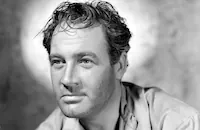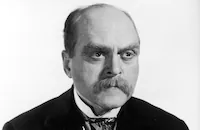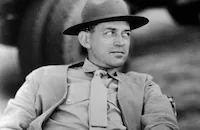The Devil Is a Sissy

Brief Synopsis
Cast & Crew
W. S. Van Dyke
Freddie Bartholomew
Jackie Cooper
Mickey Rooney
Ian Hunter
Peggy Conklin
Film Details
Technical Specs

Synopsis
Claude Pierce is delighted to be reunited in New York with his struggling architect father Jay when his mother Hilda leaves him for the sixth month's custody given Jay in their divorce. At his first day in a New York City public school, the aristocratic, English bred Claude becomes the butt of some childish practical jokes because of his polished manners, especially from "Gig" Stevens, whose father is going to the electric chair that night for murder, and Gig's pal, "Buck" Murphy. A few days later, when Buck accidentally throws Claude's football through a window, Claude takles the blame, but Mr. Crusenberry, the principal, punishes Gig and Buck for lying and the boys turn their anger towards Claude. To defend himself, Claude takes boxing lessons, and in a street fight with Buck, betters him, and wins his grudging respect. Gig goes to his aunt, Rose Hawley, a "kept" woman, to ask for money for a tombstone for his father, but because he doesn't want to tell her what the money is for, she is hesitant to give it to him. Buck and Gig try to steal to raise the money, but when they are unsuccessful, Claude suggests "stealing from the rich" like the fictional jewel thief Raffles and leads the boys to a vacant house to steal toys which Buck and Gig don't know actually belong to Claude. After they pawn the things, a policeman becomes suspicious and the boys are summoned to court. Though no theft has been reported, Claude reveals the truth. The judge puts Buck and Gig on probation, but not Claude because only Claude knew that they were taking things from his own home and not actually stealing. Angry, Buck and Gig refuse to have anything more to do with Claude. Before their first report to their probation officer, Buck and Gig decide to run away. Claude, who has caught a bad cold, determines to stop the boys, despite heavy rain, and sneaks out of his apartment and follows them to the cemetary where they have stopped to see the newly made tombstone. Claude tries to talk sense into the boys, but they won't listen. All three are soon picked up by a passing car that turns out to contain three crooks on the run. The crooks take the boys to a dinner and Claude speaks French to the French proprietor, telling him to summon the police. The boys escape during a shootout with police, but when Claude becomes delirious with fever, Buck and Gig take him to a doctor. After learning at the hospital that Claude has pneumonia, the boys decide to report to their probation officer. Hilda then arrives and sneaks Claude out to go to a better hospital and is distraught when she realizes that she has caused his condition to become critical. The boys go to Claude and tell him how much they have come to like him and an encouraged Claude recovers. Some time later, the now reformed boys are taken off probation and they happily ride bicycles with Claude, and are joined by Jay and Rose, who have started a new life.

Cast

Freddie Bartholomew

Jackie Cooper

Mickey Rooney

Ian Hunter

Peggy Conklin

Katherine Alexander

Gene Lockhart
Kathleen Lockhart

Jonathan Hale

Etienne Girardot
Sherwood Bailey
Buster Slavin

Grant Mitchell

Harold Huber
Stanley Fields

Frank Puglia
Etta Mcdaniels

Dorothy Peterson
Charles Coleman

Ian Wolfe
Rollo Lloyd
Stanley Andrews

Christian Rub
Mary Doran
John Kelly

John Wray
Andrew Tombes
George Guhl
Myra Marsh
Wally Maher
Dave Thursby
Harry Tyler
Richard Powell
George Davis
Ben F. Hendricks
Crew
Nacio Herb Brown
Rowland Brown
Frank Davis
Frank Fenton
Arthur Freed
Cedric Gibbons
Tom Held
John Lee Mahin
Paul Palmentola
Al Raboch
Harold Rosson
Richard Schayer
George Schneiderman
Douglas Shearer
Ralph Shugart
Herbert Stothart
W. S. Van Dyke
Edwin B. Willis

Photo Collections
Film Details
Technical Specs

Articles
The Devil is a Sissy
MGM announced plans for The Devil Is a Sissy in an article in The Hollywood Reporter of October 31, 1935, just six days after Sidney Kingsley's slum-set play Dead End opened to rave reviews on Broadway. Storywriter Rowland Brown started out as the picture's director, but studio veteran W.S. Van Dyke II was brought in to assist him from the start. Within days he had taken over as sole director, with most of Brown's footage scrapped. This marked the fourth time Brown, famous for his arguments with studio heads and producers, would be fired as a director. From that point, he would confine himself to writing, moving to Warner Bros. to create the story for Angels with Dirty Faces (1938), a vehicle for the real Dead End Kids, the original stars of the Broadway play. After a brief foray to Broadway as playwright and producer, he would retire from show business
By contrast, Van Dyke was the perfect studio player. He worked quickly and efficiently, earning the nickname "One Shot." But he also stood up for what he believed in and had fought to cast William Powell and Myrna Loy in The Thin Man (1934), the film that made them stars and a major screen team. Moreover, he was a perfect choice for the film, as he related to younger actors on a personal level. On weekends, he and his wife frequently invited neighborhood children and MGM's younger stars to pool parties at his house, where he was often at the center of the juvenile horseplay.
Early Retirement was the fate that almost befell one of stars of The Devil Is a Sissy. Jackie Cooper had been a mainstay at MGM as a child. But as he entered his teen years, the good looking young man was having trouble maintaining his box office popularity, particularly since the studio insisted on casting him in tear-jerkers similar to his biggest studio triumph, The Champ (1931). That strategy proved to be unsuccessful for the 15-year-old actor's career. After completing The Devil Is a Sissy, he and his mother were summoned to Louis B. Mayer's office and informed that the studio had decided to drop his option. At the time, he was earning $2,000 a week, which was more than he was worth at that point. Mayer then offered him a new contract at only $250 a week, informing him that the studio would keep him in bit parts until he got through his "awkward years." When they turned him down, Mayer had the young actor blacklisted for a year. In the meantime Cooper proved he was indeed a gifted actor in a number of B movies for other studios, often receiving the top billing. By 1941 he had worked his way back to MGM appearing as Judy Garland's love interest in Ziegfeld Girl (1941). With his recent successes in Seventeen (1940) and The Return of Frank James (1940), the studio wound up paying him $5,000 a week.
Cooper's departure after The Devil Is a Sissy, however, would hardly leave MGM at a loss for young male stars. That film had been planned less as a showcase for him than for young Bartholomew, a British actor who had scored a hit as the younger version of David Copperfield (1935). Only twelve when he co-starred with Cooper, he would continue as a top juvenile star until he really did fall prey to the awkward years of adolescence. After a few unsuccessful attempts at more adult roles, he moved into advertising.
Although The Devil Is a Sissy was intended to build Bartholomew's star status, the film provided a bigger career boost for third-billed Mickey Rooney. As the son of a death row inmate, he had a powerful scene in which he learns of his father's death. As a result, he stole the picture from his co-stars, showing the almost limitless talent that would eventually make him the movies' top box office star from 1939 to 1941.
Producer: Frank Davis
Director: W.S. Van Dyke II
Writer: John Lee Mahin, Richard Schayer
Based on a story by Rowland Brown
Cinematographer: Harold Rosson, George Schneiderman
Art Director: Cedric Gibbons
Score: Herbert Stothart
CAST: Freddie Bartholomew (Claude), Jackie Cooper ("Buck" Murphy), Mickey Rooney ("Gig" Stevens), Ian Hunter (Jay Pierce), Katharine Alexander (Hilda Pierce), Gene Lockhart (Mr. Murphy), Jonathan Hale (Judge Holmes), Etienne Girardot (Principal), Frank Puglia ("Grandma").
BW-92m.
by Frank Miller

The Devil is a Sissy
Quotes
Trivia
Notes
Although the Variety review lists a running time of 131 minuntes for the film, that undoubtedly is a typographical error as all other sources list it at 92 minutes and it was copyrighted at nine reels. According to a October 31, 1935 news item in Hollywood Reporter, Rowland Brown and Frank Fenton were developing an original story for M-G-M entitled "The Devil Is a Sissie." When the picture began production in late June 1936, Brown was the sole director. According to news items in Hollywood Reporter and Daily Variety, W. S. Van Dyke was initially brought in to assist Brown, then, a few days later, was given the assignment to complete the picture alone, the fourth time another director was called in to finish one of Brown's films. According to a August 4, 1936 news item in Daily Variety, all of Brown's work, with the exception of one or two scenes, was discarded and reshot by Van Dyke. Van Dyke received sole credit for direction in the onscreen credits and in all reviews.

Miscellaneous Notes
Released in United States 1936
Released in United States 1936















